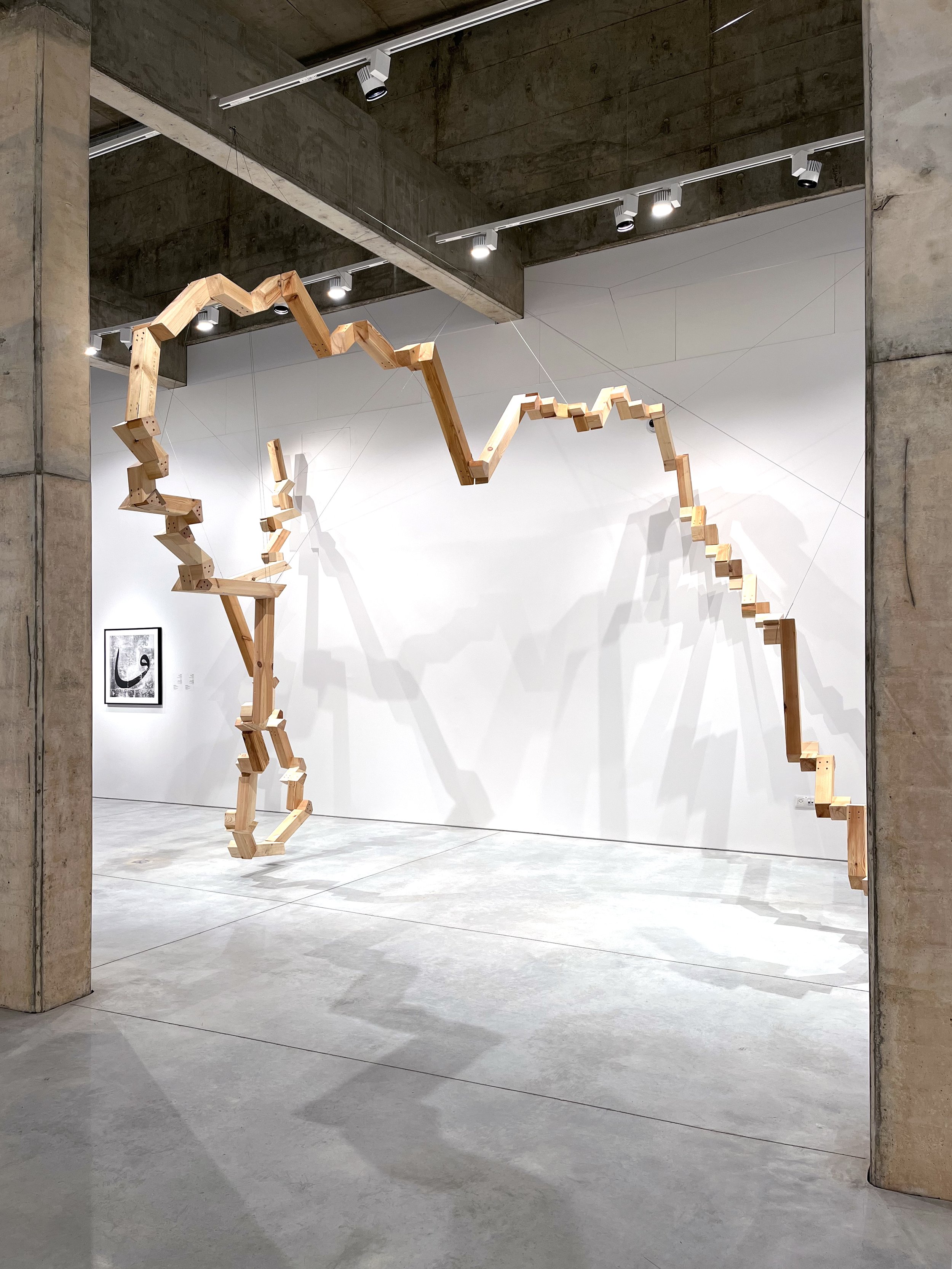
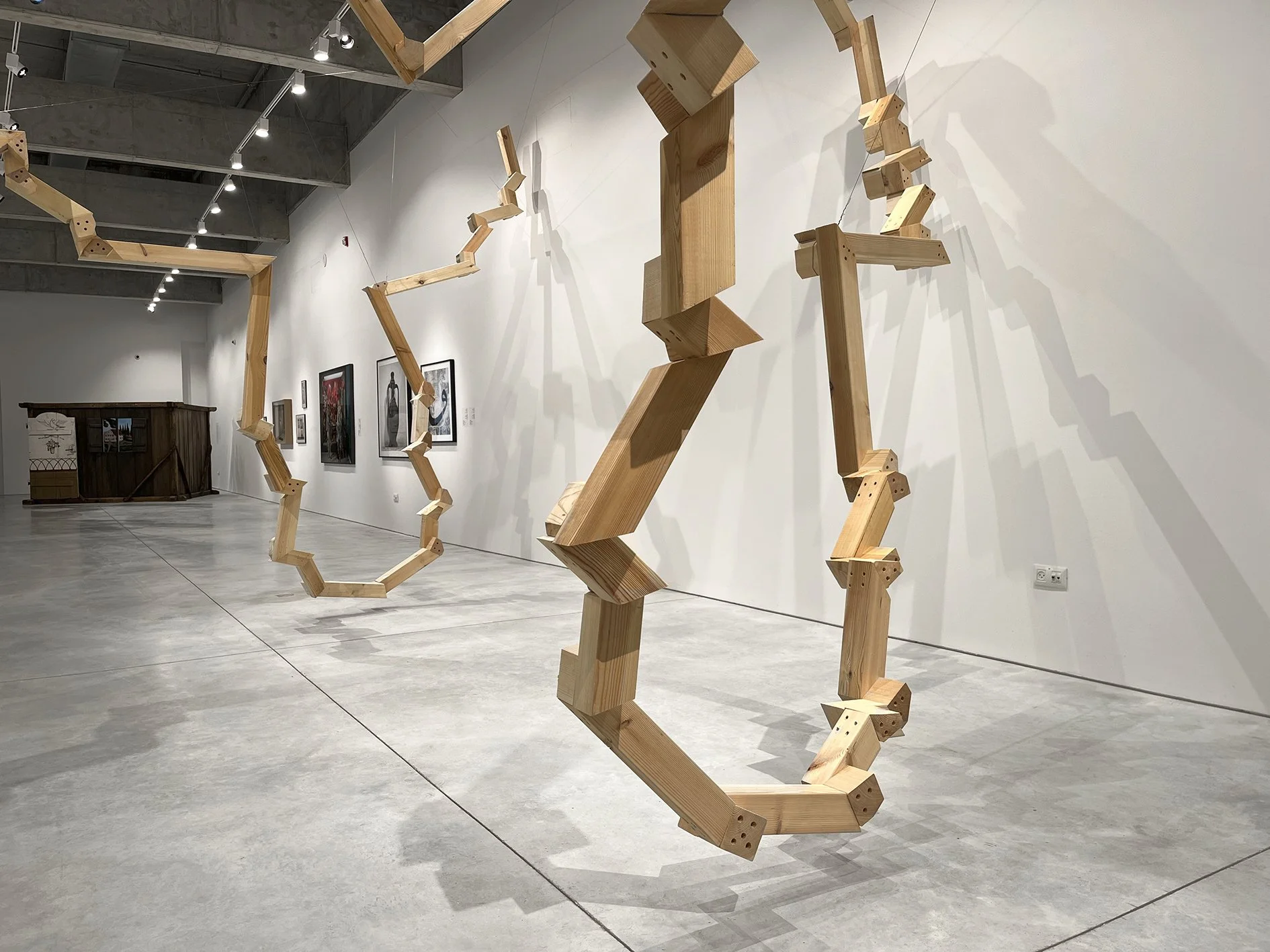
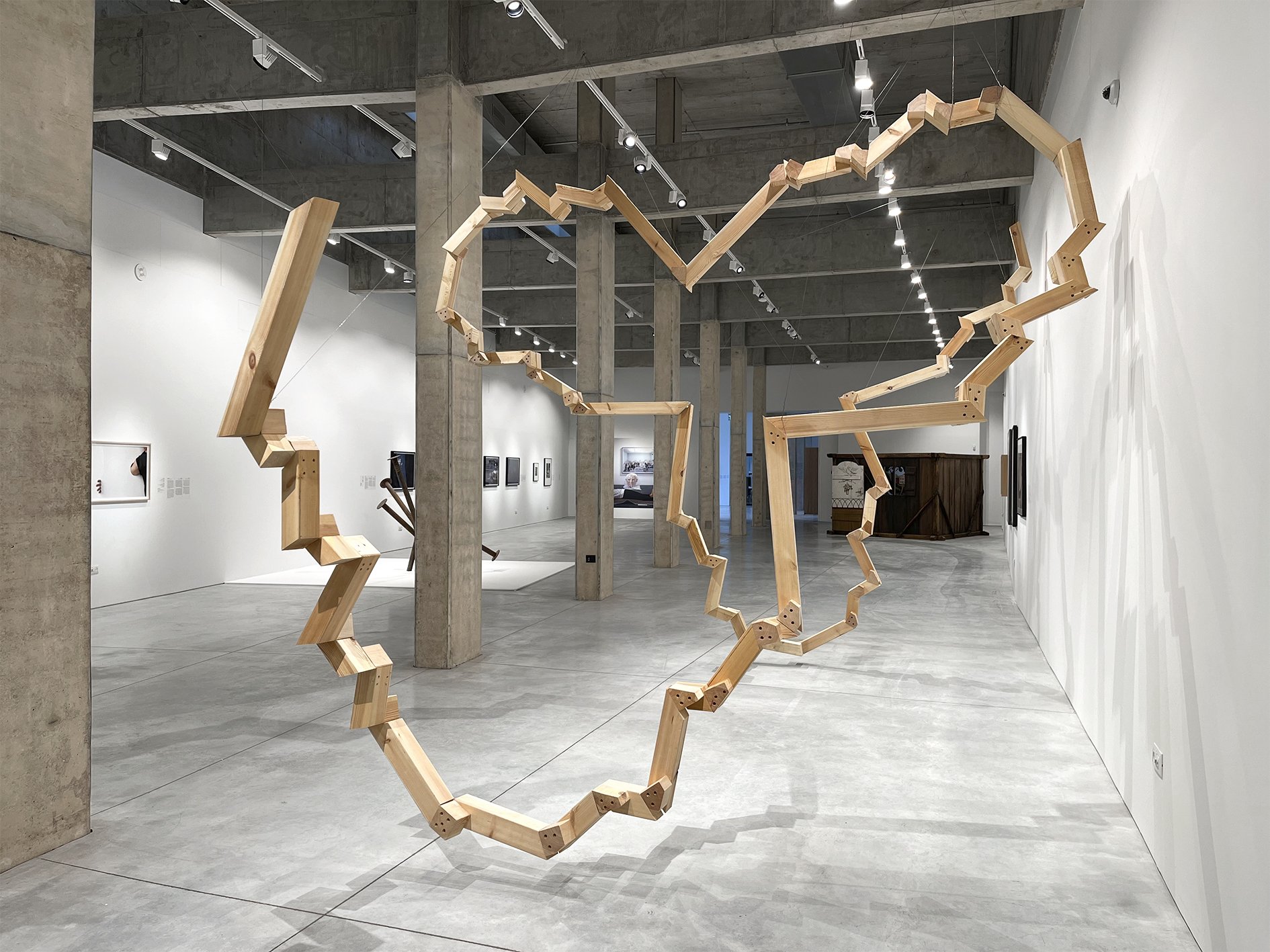
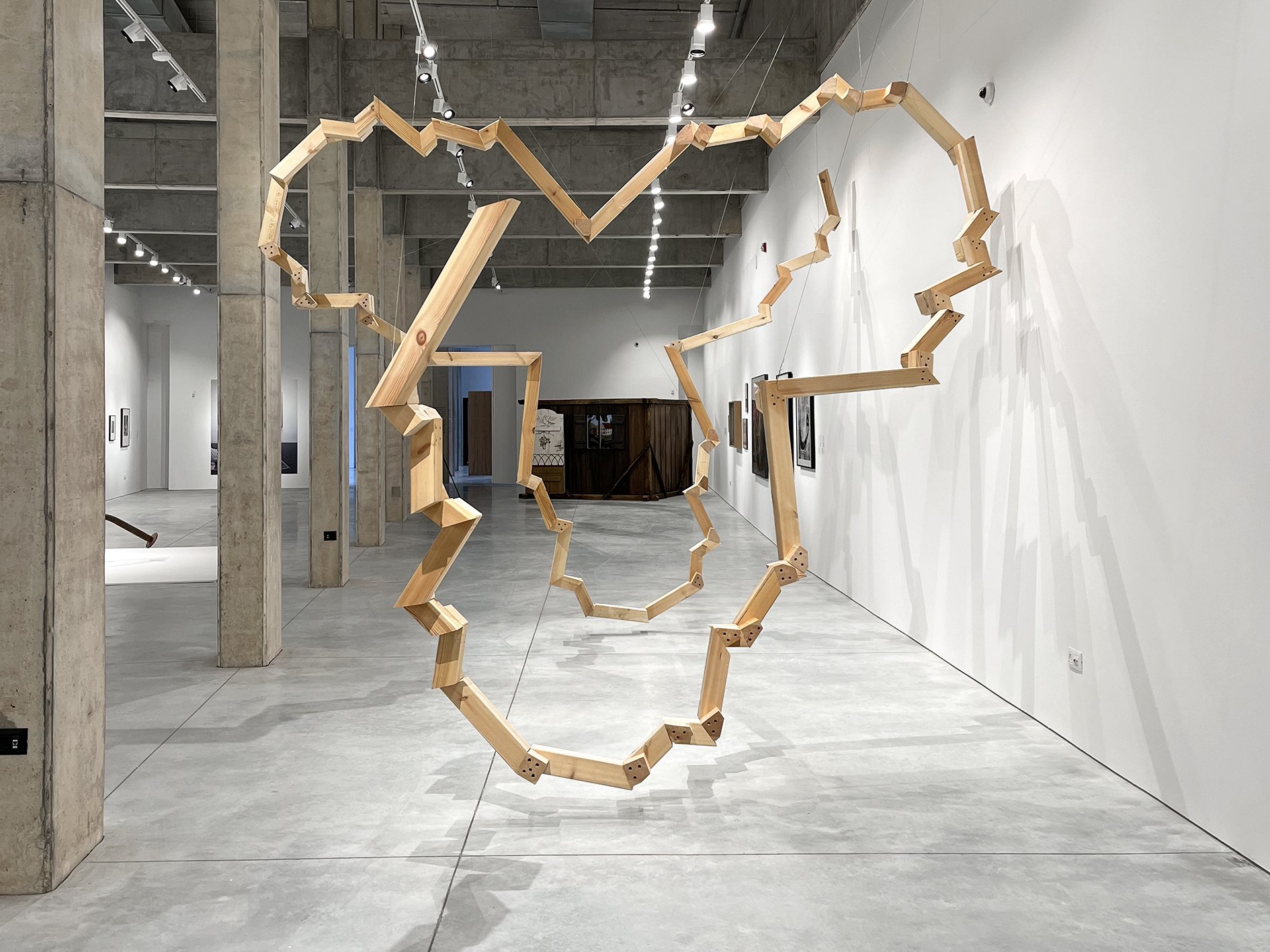
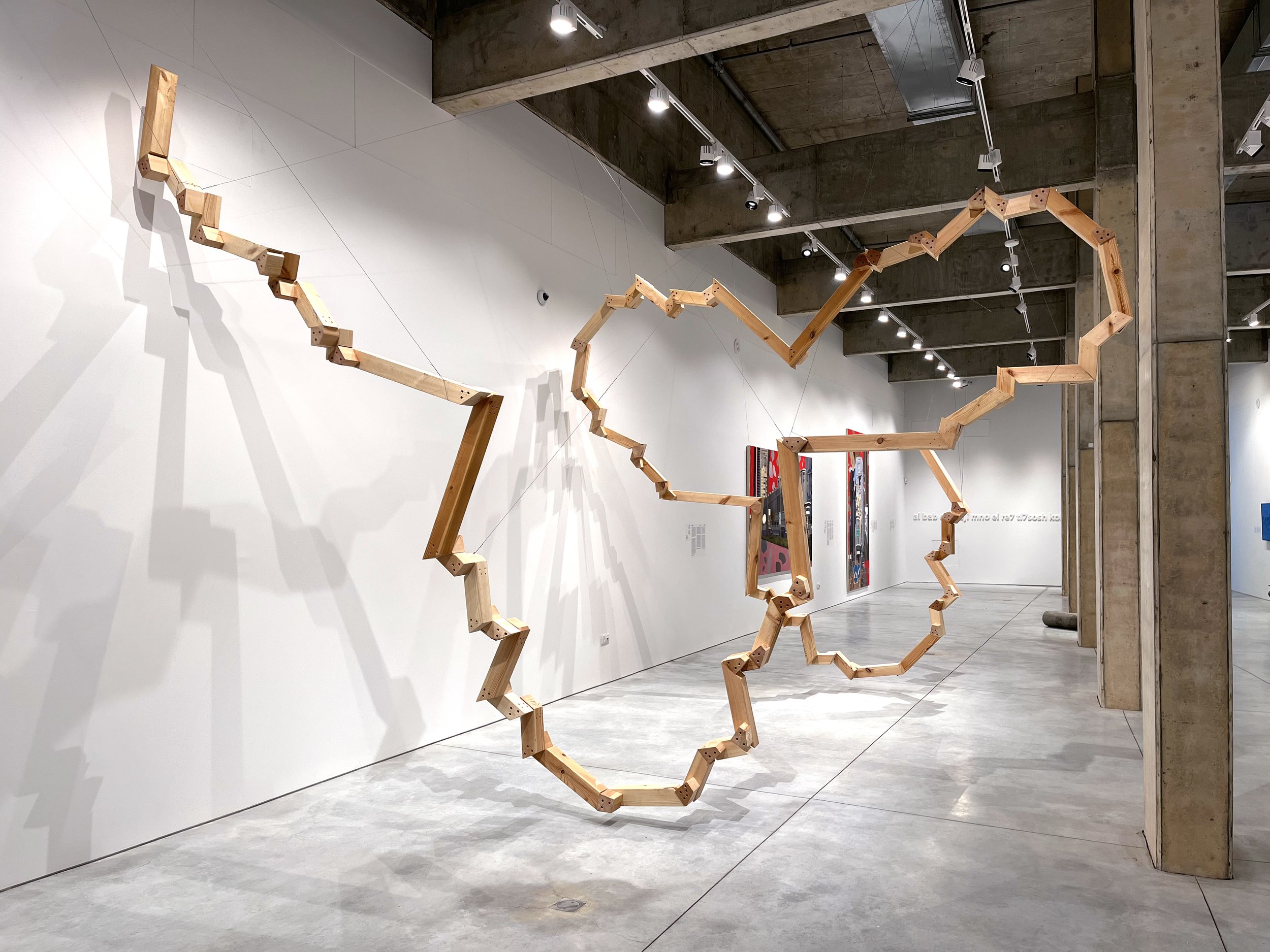
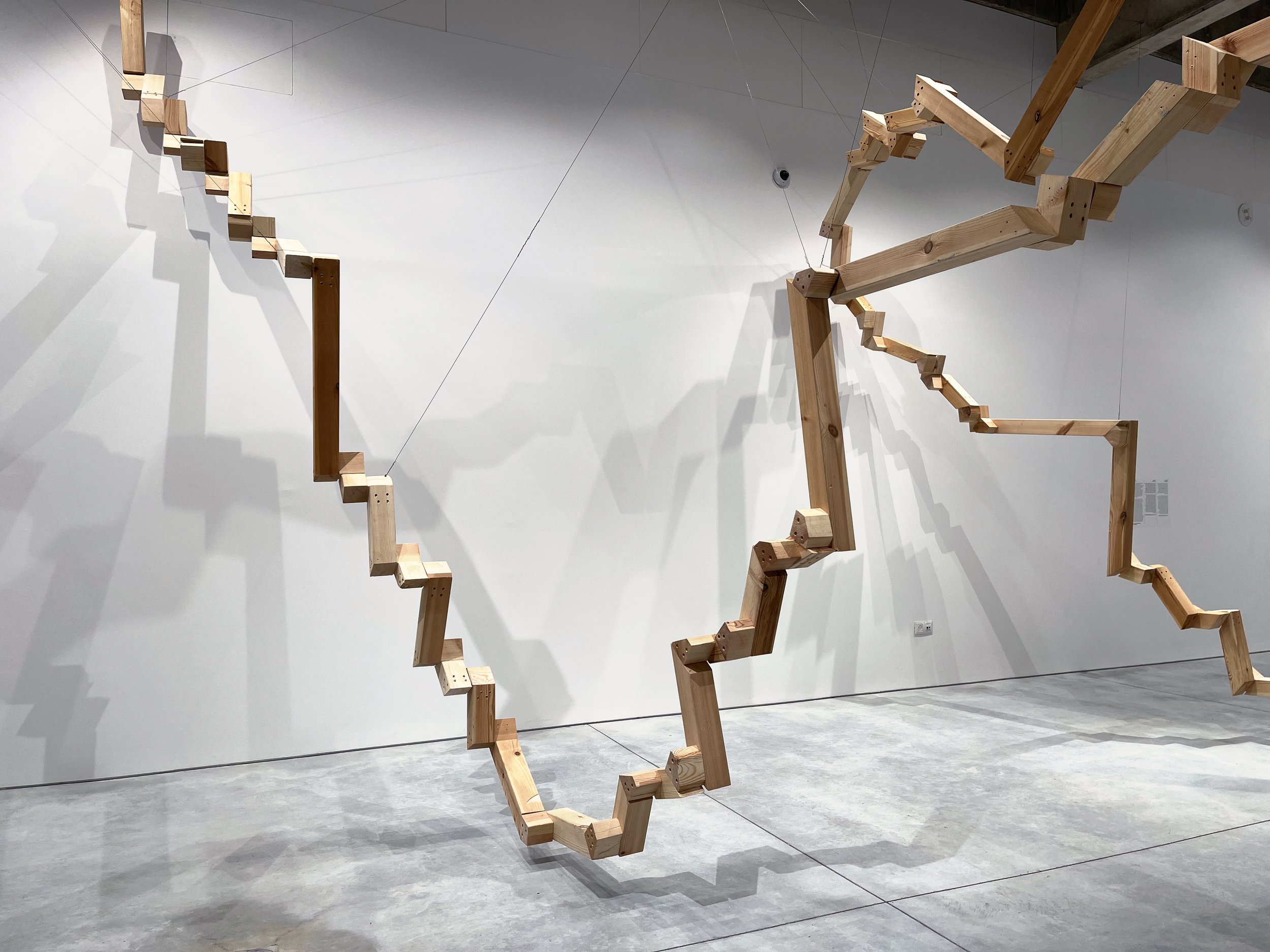
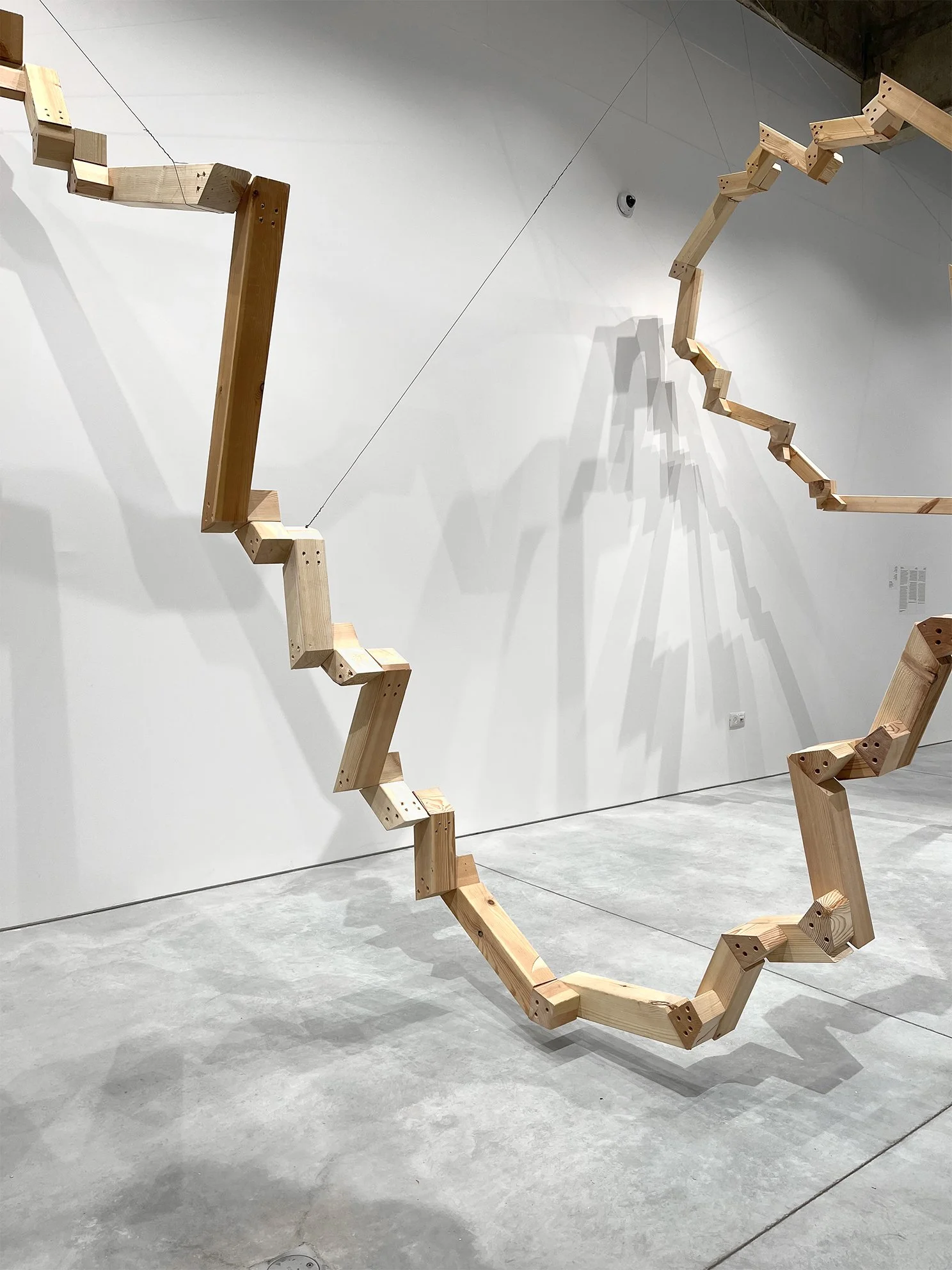
Muhammad Kaiss | Ramat Gan Museum
Kaiss is known for his site specific installations where he converts traditional Islamic interlacing geometric patterns of the arabesque into three-dimensional sculptures. What is customarily an element in architecture becomes the architectural structure itself. Furthering his inquiry into the transformation of shape, form, dimensionality and material, in Arabesque #5 Kaiss takes one step further in the alteration of this element: the arabesque's pattern is completely dismantled. Rather than preserving traditional aesthetics; shape, context and material are manipulated and the non-figurative nature of the pattern is brought to the extreme. The materialization of a sort of visual meditation of contours and lines of geometric shapes generates a linear installation which challenges perception of depth and space. The production process requires multiple levels of breakdown and decontextualization. Starting with examining a traditional arabesque, Kaiss creates a small-scale 3D wooden model, unfolds it and finally produces a large-scale reproduction of the result of the unfolding. It is the process of transformation of both dimensionality, space and connotation which bears the most weight for the artist, while the final result is so far removed from its origin that its meaning and motif may be lost on the audience. Thus the installation’s abstractness is a sort of challenge to the viewer, an allusion to the artists' inquiry into his identity and place in the local contemporary art field. The setting of the installation in the structure of the Ramat Gan Museum serves as a critical assessment on the establishment's modernist style. The installation's ornamental essence and draining of functionalism are in direct contrast with the architectural style emblematic of the European-influenced trends of the early 20th century.
Full exhibition text: ⤋ English
Muhammad Kaiss | Ramat Gan Museum
Kaiss is known for his site specific installations where he converts traditional Islamic interlacing geometric patterns of the arabesque into three-dimensional sculptures. What is customarily an element in architecture becomes the architectural structure itself. Furthering his inquiry into the transformation of shape, form, dimensionality and material, in Arabesque #5 Kaiss takes one step further in the alteration of this element: the arabesque's pattern is completely dismantled. Rather than preserving traditional aesthetics; shape, context and material are manipulated and the non-figurative nature of the pattern is brought to the extreme. The materialization of a sort of visual meditation of contours and lines of geometric shapes generates a linear installation which challenges perception of depth and space. The production process requires multiple levels of breakdown and decontextualization. Starting with examining a traditional arabesque, Kaiss creates a small-scale 3D wooden model, unfolds it and finally produces a large-scale reproduction of the result of the unfolding. It is the process of transformation of both dimensionality, space and connotation which bears the most weight for the artist, while the final result is so far removed from its origin that its meaning and motif may be lost on the audience. Thus the installation’s abstractness is a sort of challenge to the viewer, an allusion to the artists' inquiry into his identity and place in the local contemporary art field. The setting of the installation in the structure of the Ramat Gan Museum serves as a critical assessment on the establishment's modernist style. The installation's ornamental essence and draining of functionalism are in direct contrast with the architectural style emblematic of the European-influenced trends of the early 20th century.
Full exhibition text: ⤋ English
Installation view